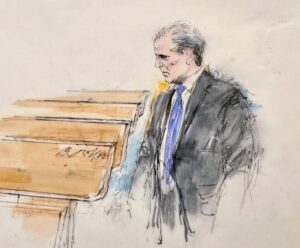
Boeing’s Starliner capsule is set to return to Earth unpiloted overnight Friday, marking the final chapter of a problematic test flight that has spanned 92 days instead of the planned one week. The spacecraft’s hatch was closed Thursday at 1:29 p.m. EDT, as astronauts Barry “Butch” Wilmore and Sunita Williams, who launched aboard the Starliner in June, remained aboard the International Space Station (ISS).
The Starliner is scheduled to undock from the ISS at 6 p.m. EDT Friday, after which its braking rockets will fire for about 59 seconds to initiate re-entry. The capsule is expected to land just after midnight at White Sands, New Mexico, with Boeing and NASA recovery teams on standby.
While the Starliner returns home, Wilmore and Williams will remain aboard the ISS until February, when they are scheduled to return on a SpaceX Crew Dragon. By then, the astronauts will have spent 262 days in space.
During her final preparations aboard the Starliner, Williams remarked on the bittersweet moment of packing up the spacecraft. “We want to make sure she’s in good shape,” she said, adding that the team was doing their best to ensure a smooth landing.
Boeing initially expected Wilmore and Williams to be aboard the Starliner for its return to Earth, concluding the capsule’s first piloted test flight. However, after helium leaks were detected in the propulsion system and five maneuvering jets malfunctioned during the ship’s rendezvous with the ISS, Boeing and NASA faced critical decisions.
Despite extensive testing that led Boeing engineers to conclude the Starliner was safe for a crewed return, NASA disagreed. NASA Associate Administrator Jim Free explained that Boeing and NASA viewed the risks differently, ultimately deciding there was too much uncertainty to bring the astronauts back aboard the Starliner.
The malfunctioning jets are crucial for maneuvering the spacecraft away from the space station and keeping it stable during its descent. Though more powerful thrusters are used for re-entry, the smaller reaction control jets ensure the capsule stays on the correct trajectory.
“Spaceflight is hard. The margins are thin,” said Norm Knight, director of flight operations at NASA’s Johnson Space Center. “And we have to be right.”











